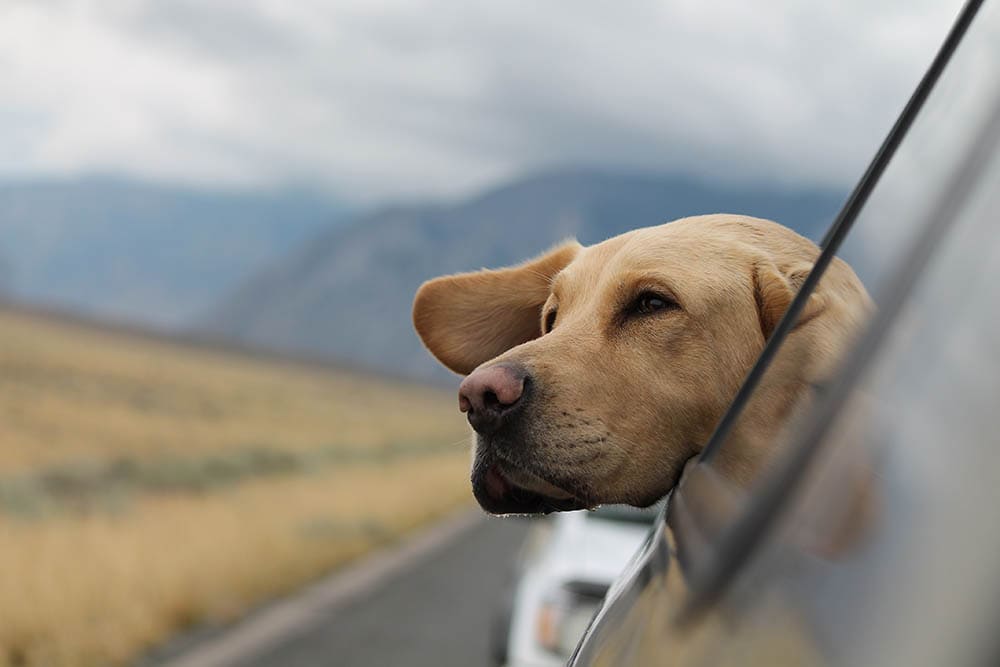VET APPROVED

The information is current and up-to-date in accordance with the latest veterinarian research.
Learn more »Do you love pets and love to travel? If so, you’re probably wondering whether your two loves can safely co-exist. Luckily, many pets travel well, but depending on the size and type, your transportation options may be limited to car travel.
Here are six pets that travel well, along with some tips for traveling with pets.

The 6 Pets That Travel Well
1. Dogs
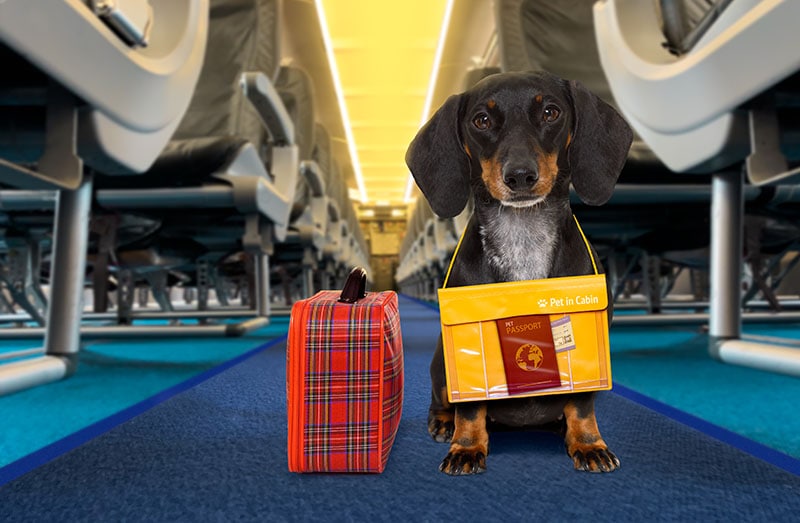
| Travel type: | Air travel, road trips, train travel |
| Recommended safety equipment: | Carrier, seat belt harness, booster seat |
Dogs are probably the most common and easiest pets to travel with, especially on road trips. Many airlines allow small dogs to fly in the cabin with you. Large dogs often need to travel in a special part of the cargo hold, but it is less desirable and not without risk, and many owners prefer to avoid it.
Small dogs are allowed to ride in the cabin on Amtrak trains, with some limitations. Use caution when traveling (especially by plane) with flat-faced breeds like the French Bulldog or Pug, who can quickly become overheated and suffer breathing issues.
Every dog is an individual, and not all may enjoy traveling. Consider alternative arrangements if you love to travel, but your dog doesn’t seem to agree.
2. Cats
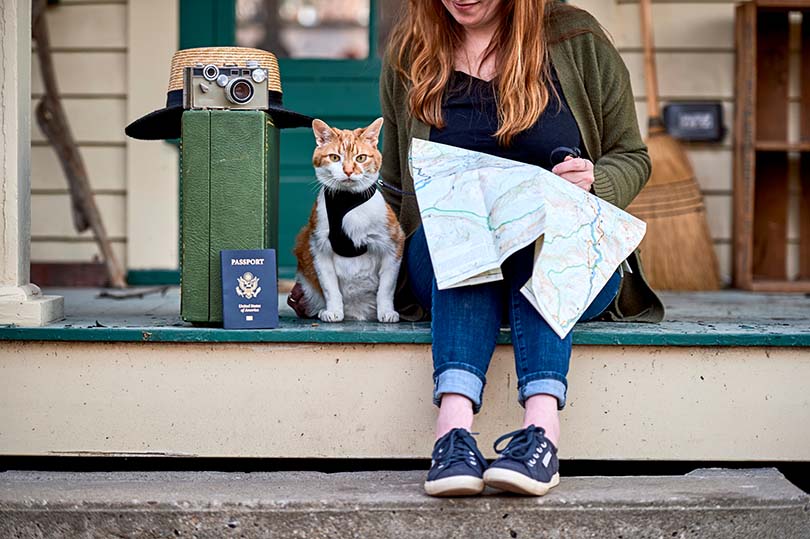
| Travel type: | Air travel, road trips, train travel |
| Recommended safety equipment: | Carrier, seat belt harness, booster seat |
As cats grow in popularity as pets, so does the interest in traveling with our kitties. While many cats are petrified to leave their houses’ friendly confines, others relish the change to accompany their owners on new adventures. Cats are often allowed in plane cabins and on some trains with limitations.
Travel with a cat can be a little more complicated because of the need to provide a litter box. Even more so than dogs, the cat’s personality determines whether they will travel well. Like dogs, be careful when traveling with flat-faced cat breeds like Persians.
3. Birds
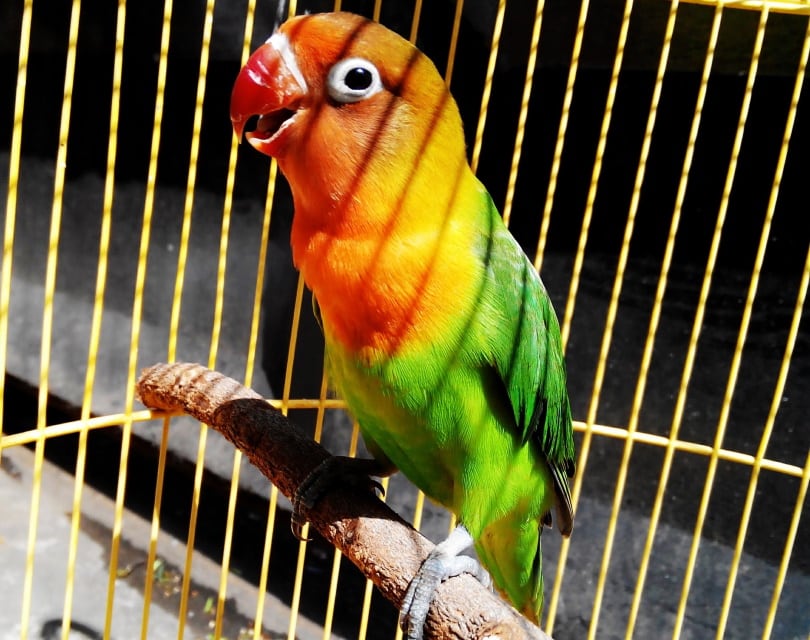
| Travel type: | Air travel, road trips |
| Recommended safety equipment: | Carrier, travel cage |
Some pet birds can make surprisingly good travel companions, but this is greatly dependent on their previous experiences, health, age, size and personality. Some airlines may even allow smaller bird species to fly in the cabin. Calm, healthy, friendly, well-socialized birds will travel best. Take extra care to secure your bird when traveling by car. If they are in a carrier or travel cage, ensure it is also secured, so it won’t roll around the car and potentially injure your bird.
If you already know you want to travel with your bird when you bring them home, start early to get them accustomed to the process, in order to avoid stress. International travel will be more complex due to required paperwork so consult with your vet If you need to take your bird out of the country.
4. Rats
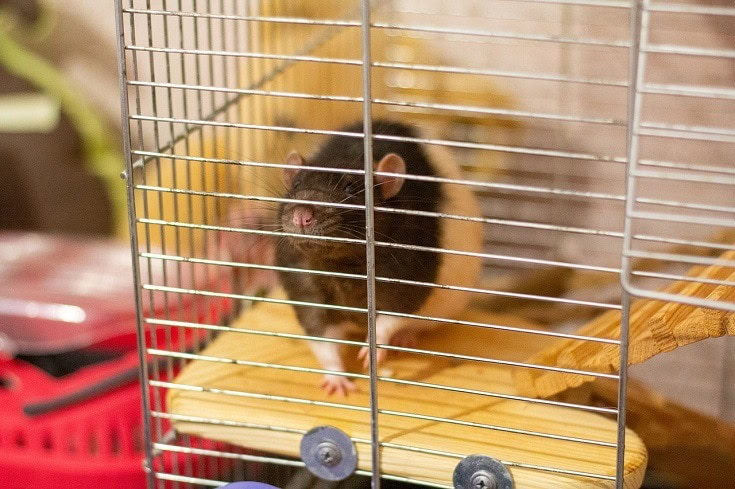
| Travel type: | Road trips |
| Recommended safety equipment: | Carrier, travel cage |
Despite their common association with sewers, rats make excellent pets when well-socialized and some can also learn to travel well. Well-socialized pet rats are usually calm, friendly, and enjoy the company of their people.
All these attributes can also help them travel well, but it will depend on the individual rat. However, you’ll most likely be limited to road trips if traveling with a rat. Make sure your pet is secured in an appropriate-sized carrier.
5. Ferrets

| Travel type: | Road trips |
| Recommended safety equipment: | Carrier |
Ferrets are entertaining and enthusiastic pets that can also travel well under the right conditions. Again, you will be limited primarily to car travel. Before setting out on a road trip with your ferret, double-check local rules and regulations to ensure they’re allowed.
Ferrets are curious and clever, so be sure they are secured in an escape-proof carrier while in the car. Keep the carrier secured as well, and never travel with your ferret in the front seat if you have airbags. Make sure your ferret is comfortable with travel by getting them adjusted to it from a young age. Be especially mindful of environmental temperatures during travel in warm weather as ferrets are prone to overheating. Never leave them unattended in a car and make sure your air conditioning is running properly.
6. Rabbits

| Travel type: | Road trips |
| Recommended safety equipment: | Carrier |
Because rabbits can stress easily, you’ll need to put a little more preparation into traveling with them, but it can be accomplished. However, in most cases, it’s best avoided. Some airlines may allow rabbits to travel in the cabin, but you’ll generally be road-tripping with your bunny. Rabbits that are more mellow will likely travel better than anxious, high-strung ones.
Keep your bunny safely contained in a carrier while traveling. Give your rabbit the chance to get used to the carrier before your trip. Only take your rabbit on a trip if their personality allows it, as they are generally quite sensitive animals prone to stress and travel is likely to make them feel frightened, leading to various health issues that can quickly become severe or even life threatening, such as gut stasis or shock.

Tips for Traveling with Pets
First, plan carefully, especially when traveling by car. How can you safely take breaks to let your pet use the bathroom, eat, drink, etc.? What will you do with your pet while you have food and bathroom breaks? Where will you stay along the way, and do they allow pets?
Check the rules and regulations for traveling with your pet by air or train. You may need to bring health certifications or medical documents. When traveling by car, make sure there are no rules you need to be aware of in the new location, and familiarize yourself with local and emergency vet clinic locations.
Ensure your pet is healthy and up to date on all shots before traveling. Pack any medications they’ll need.
Bring your pet’s food, toys, cage, bed, and other items to help them feel safe and secure while traveling. Give all pets a chance to get used to the carrier and car over short distances before hitting the road for a more extended trip. And most importantly, make sure your pet doesn’t find the journey stressful, in which case, finding a reliable pet sitter instead may be a safer option than travel.

Conclusion
With so many new and exciting places to see around the world, even frequent travelers can always find somewhere new to explore. Traveling pet owners can’t just pick up and leave like pet-free people, but that doesn’t mean they have to stay home. Many pets can learn to travel well and even enjoy the adventure.
Just remember that some animals dislike traveling. Do everything you can to keep your pet calm and safe, but it’s time to make different arrangements if they are stressed or anxious when it comes to traveling.
Featured Image Credit: Emerson Peters, Unsplash
